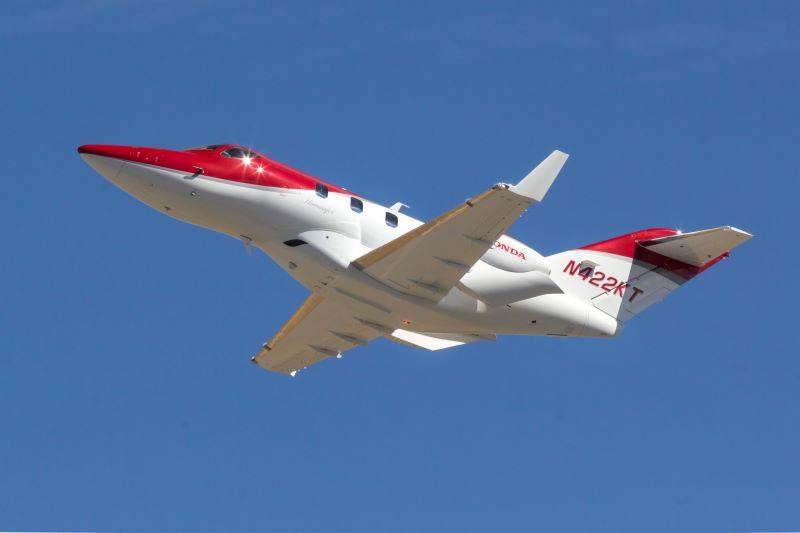
A HondaJet HA-420 in flight.
A 2017 HondaJet HA-420 was landing on a wet runway when it overran the airport, slid down embankments and caught on fire, according to a National Transportation Safety Board preliminary finding of the May 18 runway incursion.
The pilot and five passengers were not injured.
The accident took place at the Summerville Airport (DYB) in Summerville, South Carolina. The aircraft, N255HJ, is registered to UpFrunt Services, based in Dover, Delaware, FAA records show.
It was the seventh runway incursion involving a HondaJet in the past 12 months.
According to the report released by the NTSB, the pilot had delayed departure from the Wilkes County Airport in North Carolina to let rainstorms pass in the Summerville area, He knew he would be landing on a wet runway in Summerville because of the weather, he told the NTSB.
“The pilot said he had landed at DYB ‘hundreds’ of times on both a dry and wet runway and had never had an issue with not having enough runway length to land,” the NTSB report says.
The wind was calm. The pilot flew the approach at 120 kt with full flaps and immediately applied full braking pressure on touchdown. The brakes then “immediately began to pulsate in anti-skid mode and because of that, very little braking effort was being done to slow the plane despite full pedal pressure,” it said. The anti-skid system had a slower on/off cycle than he had experienced in previous wet runway landings, where the system had a more rapid on and off response, he told the NTSB.
About halfway down the runway, the pilot said it became apparent he would not make the turnoff at the second taxiway, but he was not concerned because there was plenty of remaining runway. And he had always stopped with reserve length remaining even under wet conditions. The pilot said he had considered a go-around, but the left brake “grabbed” and the aircraft’s nose suddenly yawed to the left. Thus began a sequence of left and right skids, the report says.
The pilot was able to keep the airplane on the runway and he could straighten the nose before running off the runway into the grass. The aircraft then slid down a series of embankments before coming to rest about 360 ft. from the departure end of the runway.
A post-impact fire consumed the cockpit, center fuselage and right wing. The aircraft was not equipped with a cockpit recorder or a flight data recorder. Neither was required.
“Honda Aircraft Co. is actively supporting the investigation,” the company said in a statement. “As the investigation is ongoing, we do not have further details to share at this time.”
Safety and the reliability of its aircraft are Honda Aircraft’s top priorities, it said.
“Our dedicated team is working closely with the NTSB and FAA to determine the cause of this occurrence and to implement any necessary measures,” Honda Aircraft says. “In all closed investigations of previous runway events, investigators found no causal factors from the aircraft’s design or any system malfunction. Our engineering and analysis supports our product as a safe aircraft to operate.”





